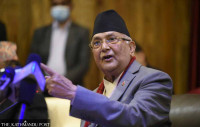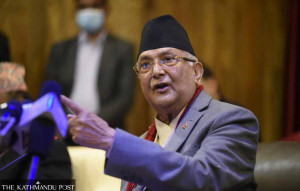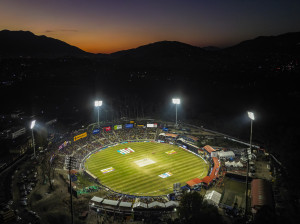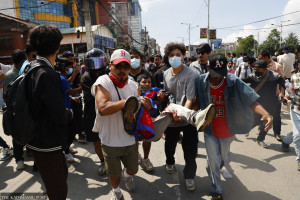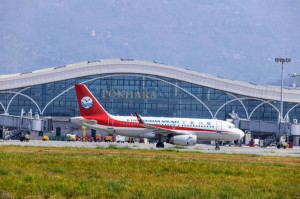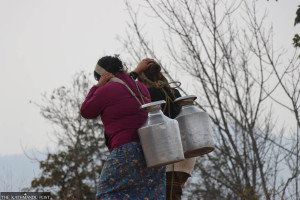Editorial
Another cruel reminder
The 6.8 magnitude earthquake in Morocco makes Nepalis mindful of their own vulnerability.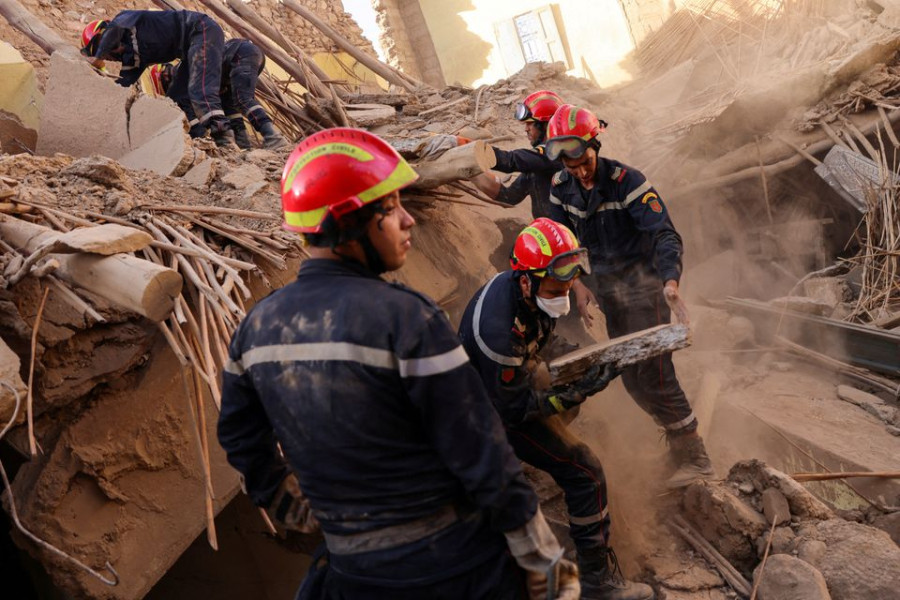
The world is mourning the lives of around 3,000 people killed in the devastating 6.8 magnitude earthquake that struck Morocco on September 8, also damaging property and the old city of Marrakech, a UNESCO World Heritage site. Nepal, a country that has witnessed the deadliest earthquakes, cannot help but reflect on its own vulnerability to earthquakes as Morocco goes through its worst times.
Nepal straddles two massive tectonic plates—the Indian and Eurasian—the collision of which was responsible for forming the Himalayas and the earthquakes that occur now and then. For the same reason, the United Nations Development Programme (UNDP) ranks Nepal the 11th most earthquake-prone country and Kathmandu as one of the most quake-vulnerable cities in the world due to its poor infrastructure and burgeoning population. Scientists argue that the movement of tectonic plates in the Himalayan region is a never-ending process, with the risk of earthquakes ever-present and areas with high population density areas most at risk.
A study conducted in 2017 with the collaboration of the Ministry of Urban Development and the Japan International Cooperation Agency highlighted that 94 percent of houses in Kathmandu Valley don’t meet Nepal’s National Building Code and are vulnerable to earthquakes. What’s more, according to a Nepali Times article, the National Society for Earthquake Technology (NSET) warns of a large seismic gap in western Nepal between Pokhara and Dadeldhura. There has not been a major earthquake since 1505, and an earthquake of more than eight magnitude is anticipated in the area. This serves as a reminder to Nepal to improve its readiness and resilience.
In the past, the government of Nepal has repeatedly decided to halt the construction of buildings taller than two stories, only to hold back from its implementation. As a result, many new buildings are violating construction standards. Given that, the government shouldn’t delay tightening building codes in earthquake-prone areas such as Kathmandu and the western region and ensure constructions adhere to seismic design principles. Even rural areas lack properly engineered houses. There should be coordination between the tiers of government to determine whether the houses, schools and other buildings all over Nepal adhere to the National Building Code of Nepal. It is also necessary to adequately retrofit old buildings, temples and heritage sites.
As important is learning how other countries deal with earthquakes. For instance, due to their better preparedness, medium-intensity earthquakes cause little damage to life and property in Japan and Chile. Moreover, many countries that are highly exposed to tremors are working on educating their citizens to build awareness about measures to minimise the effects of earthquakes. Similar public awareness programmes and seismic hazard assessments could be beneficial for Nepal—and this is not happening to the desired extent.
Natural disasters such as earthquakes are unpredictable. However, political parties aren’t focused on these issues. We should abandon our complacency to earthquakes and be prepared to deal with them to limit future property loss and damage. According to experts, one factor behind the massive destruction in the 2015 earthquake that killed around 9,000 people and affected many more was the poor implementation of building codes. Again, it’s crystal clear where the government’s focus should be aimed at.




 16.12°C Kathmandu
16.12°C Kathmandu




